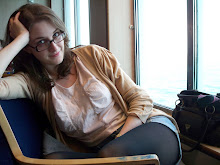Wu Chi-Tsung is a Taiwanese artist who still lives and works in Taiwan. His main interests are photography, painting and installation and is currently the artist in residence at Manchester's Chinese Arts Centre.
Being raised in Taiwan, his first experiences of art were the traditional Eastern methods of calligraphy, watercolour and pencil when he was very young. When Wu Chi-Tsung attended art college, he moved onto video and film work yet the traditional cultural influence was always present.
His videos often involve the camera's features, for example one of his most simple videos is the view from his studio in Taiwan, this was filmed using a slow shutter speed in order to catch the raindrops on film.
Wu Chi-Tsung's first major installation was 'Wire'. Playing with light, this projection of a piece of wire mesh is simple but effective. As the projector focuses and the lens changes, it resonates a peaceful yet slightly eerie mood. The light and shadows look like clouds and the moon or mountains and hills with mist creeping through them. An open projector allows the audience to view the process, yet the projection appears to be an illusion; how the mesh is presented allows the viewer to see the object as something it isn't. After the success of 'Wire', Wu Chi-Tsung created 'Wire II', 'Wire III' and 'Wire IV'. 'Wire II' differs as the wire mesh is positioned on a slowly rotating wheel, similar to a film projector. 'Wire II' particularly resembles a mountainous landscape. 'Wire III', created in 2007, is a projection in a large circular space and the speed of the projector increases. The viewer can feel this speed throughout their body, the mood of the installation is violent and dangerous. This projection in a circular space is possible due to the lamp-like projector fixed to the floor. 'Wire IV' is based on the first installation; 'Wire'. The lens in the projector is wide and narrow, this allows for the image to start off small and gradually increase in size so the wire mesh is visible.
'Self-Portrait' is a photography project and Wu Chi-Tsung's first solo show. Using a long exposure and a flash-light in a dark room, he 'draws' a self-portrait. This experimentation in photography led to an interest in capturing landscapes, factories and historic buildings. He produced a few photographs from a 24 hour long exposure from 12 am to the following 12 am. On the opening night of this exhibition, Wu Chi-Tsung burnt the slides and films used.
'Dust' is an installation similar to his 'Wire' series with the use of a projector. Created in 2006, 'Dust' is simply a room with a projector and lights. As people enter the room, their movements causes any dust to lift and swirl in front of the lights. The faster people move, the faster the dust moves in this interactive piece of work. Personally, I think the dust looks like sequins and glitter or even stars. Therefore, this work explores scale as this green-tinted starry dust can represent thousands of stars in a galaxy or even the universe.
In 2008, Wu Chi-Tsung elaborated upon his photographic work with a photo/video series called 'Perspective'. These images are modern cityscapes of Taiwan and remain close to his own culture. The space condenses and bends the image, viewers are unable to find the vanishing point and the image appears flat. Any moving people or vehicles in the videos turn very thin as the feeling of space entirely changes. Many of the works in this series are of roads and pavements in the Taiwanese city he lives in, the work seems to give the viewer a different viewpoint; slight changes provide new viewpoints to observe the world.
'Still Life' holds even more cultural influence as he captures bonsai plants. He extended this further with 'Pine' and made videos of bonsai plants seemingly coming into focus through a white mist, which was in fact a mixture of milk and water. I found these to be peaceful works. 'Relife' however is of burning bamboo. Wu Chi-Tsung states; "the energy of flames and plants are very traditional". He made these works as many people believe that videos cannot be bought as a piece of artwork to display in the home, yet Wu Chi-Tsung presents his videos as paintings to appeal to art buyers.
Returning back to installations, 'Crystal City' is created from perspex boxes and lights. Shadows are cast through the transparent boxes; the light is quite digital and the shadows are very sharp. This produces a view across the city, which has one messy side and one ordered side, inspired by Beijing. Continuing from 'Crystal City' and his most recent piece of work; 'Float' doesn't cast shadows but gives the impression of flying or falling around the city buildings.



No comments:
Post a Comment